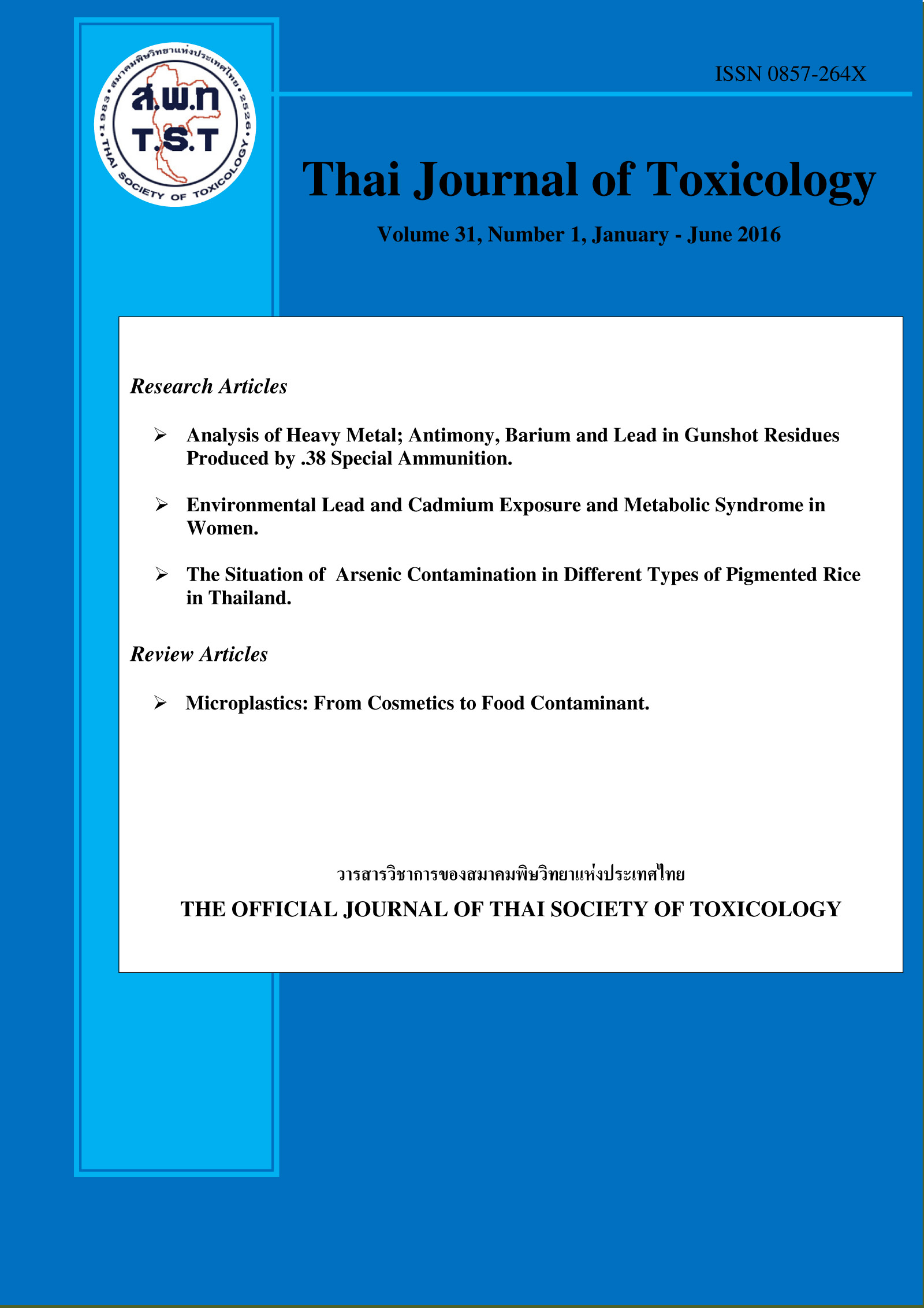The Situation of Arsenic Contamination in Different Types of Pigmented Rice in Thailand
Main Article Content
Abstract
Arsenic in Thai rice is mostly found in an inorganic form and the level of arsenic reveals higher in unpolished rice than in polished rice. Pigmented rice is beneficial for health and suggested to consume as unpolished rice. The objective of this study was to evaluate the status of arsenic contamination in 5 Thai pigmented rice, including Hom Mali Dang rice, Hom Nil rice, Riceberry rice, Sang Yod rice and Luem Pua glutinous rice. The samples were collected from supermarkets in Bangkok metropolitan region and the local rice producer groups in 4 regions of Thailand. Total arsenic, inorganic arsenic [As (III) and As (V)] and organic arsenic (DMA and MMA) in 103 rice samples were analyzed by HPLC-ICPMS. The pigmented rice samples were found to contain low levels of total arsenic. The mean contents of total arsenic, inorganic and organic arsenic were 0.179, 0.112 and 0.036 mg/kg, respectively. The level of inorganic arsenic was higher than organic arsenic. The ratio of inorganic arsenic to total arsenic in 5 types of pigmented rice at the mean levels were similar, with a range of 0.60 - 0.65. For inorganic arsenic, As (III) was found in higher level and more number of samples than As(V). For organic arsenic, only DMA was found. Most pigmented rice samples (96 %) contained inorganic arsenic below the maximum level proposed by the European Commission (0.25 mg/kg for unpolished rice). This study found that Sung Yod rice contained the highest inorganic arsenic content (mean concentration was 0.166 mg/kg) whereas Luem Pua glutinous rice contained the lowest inorganic arsenic content (mean concentration was 0.015 mg/kg). Two types of rice were domestically grown in different regions with geographically difference. Thus, the contamination of arsenic in the pigmented rice may cause by many factors and only found in some agricultural areas.


